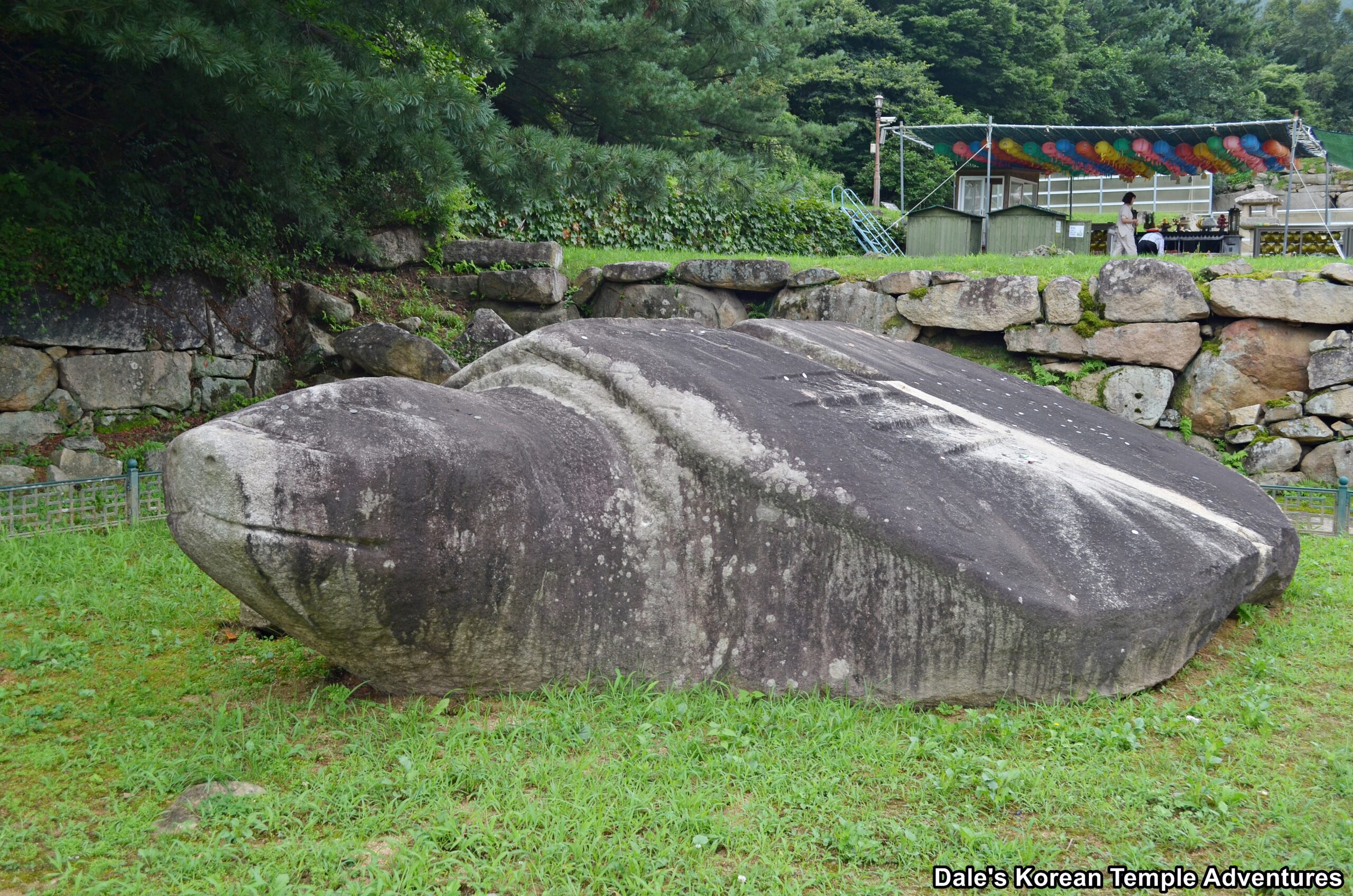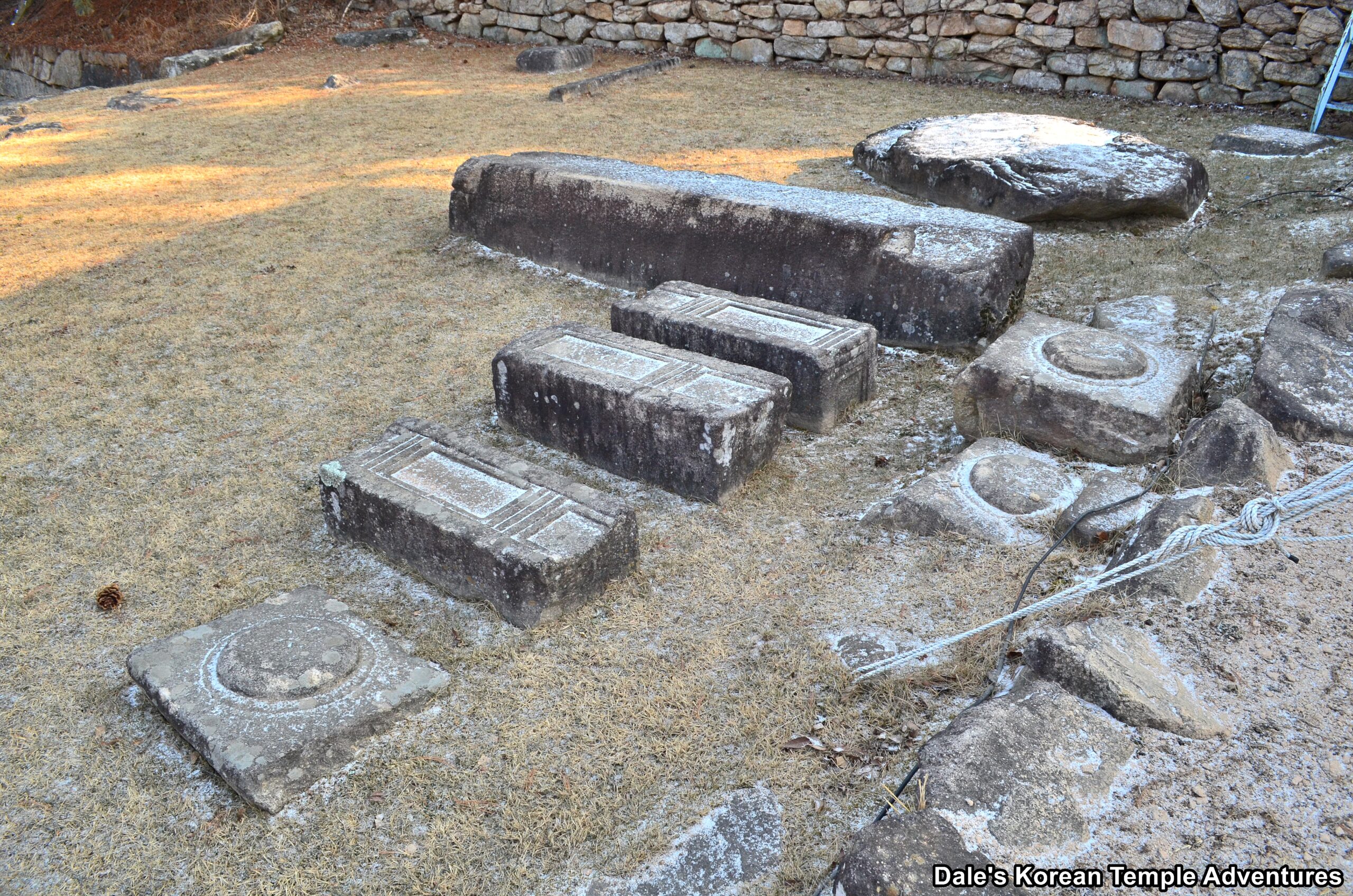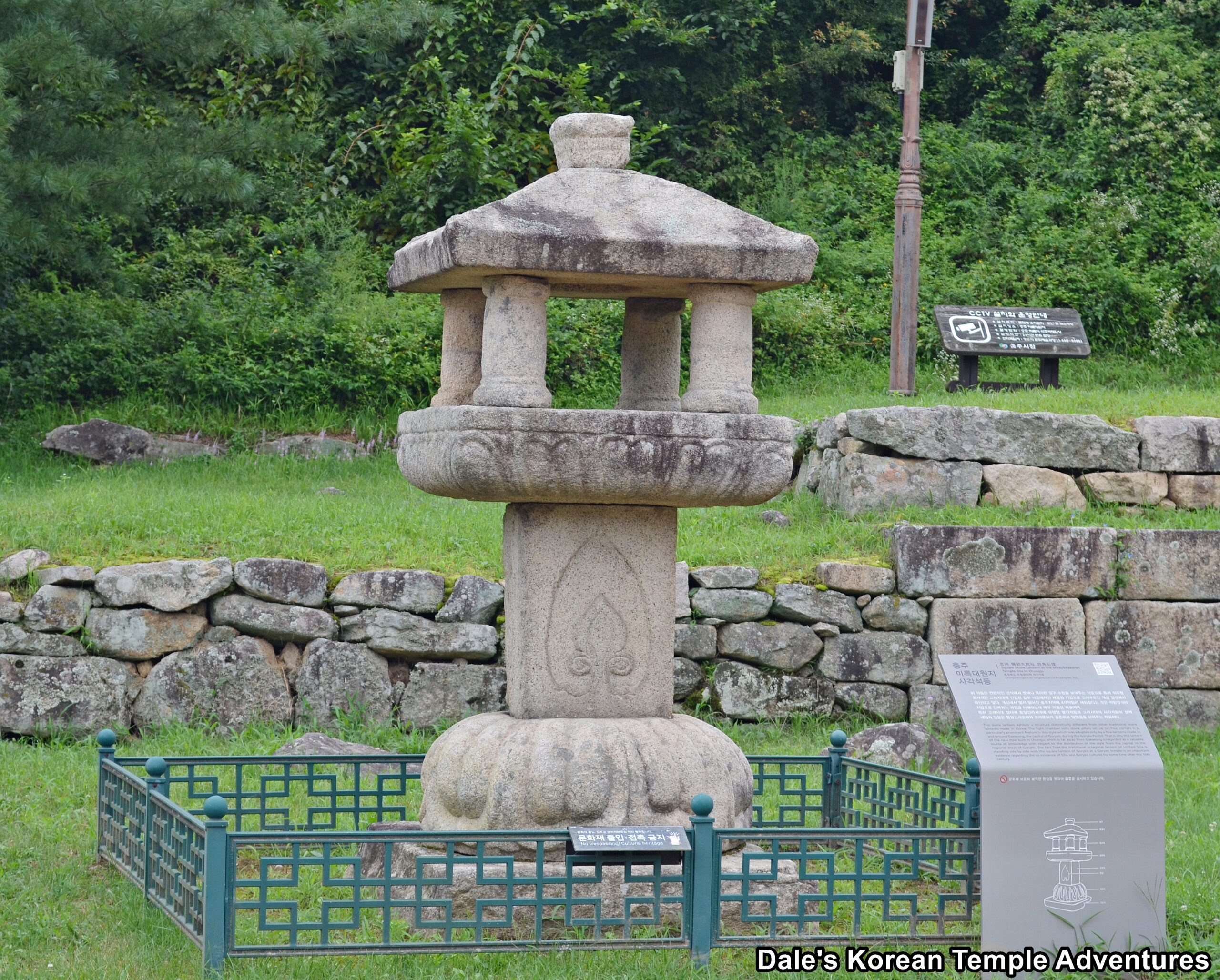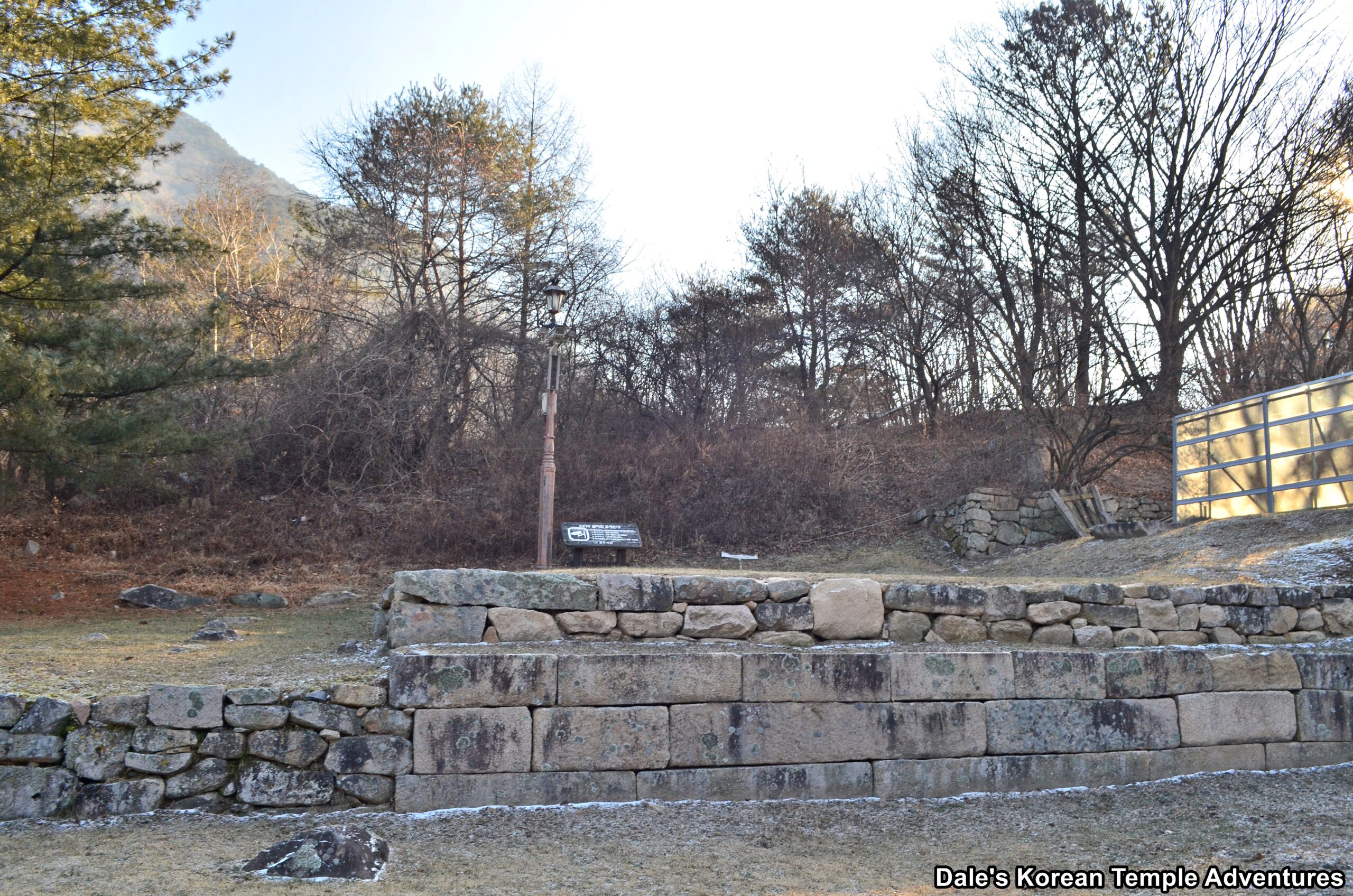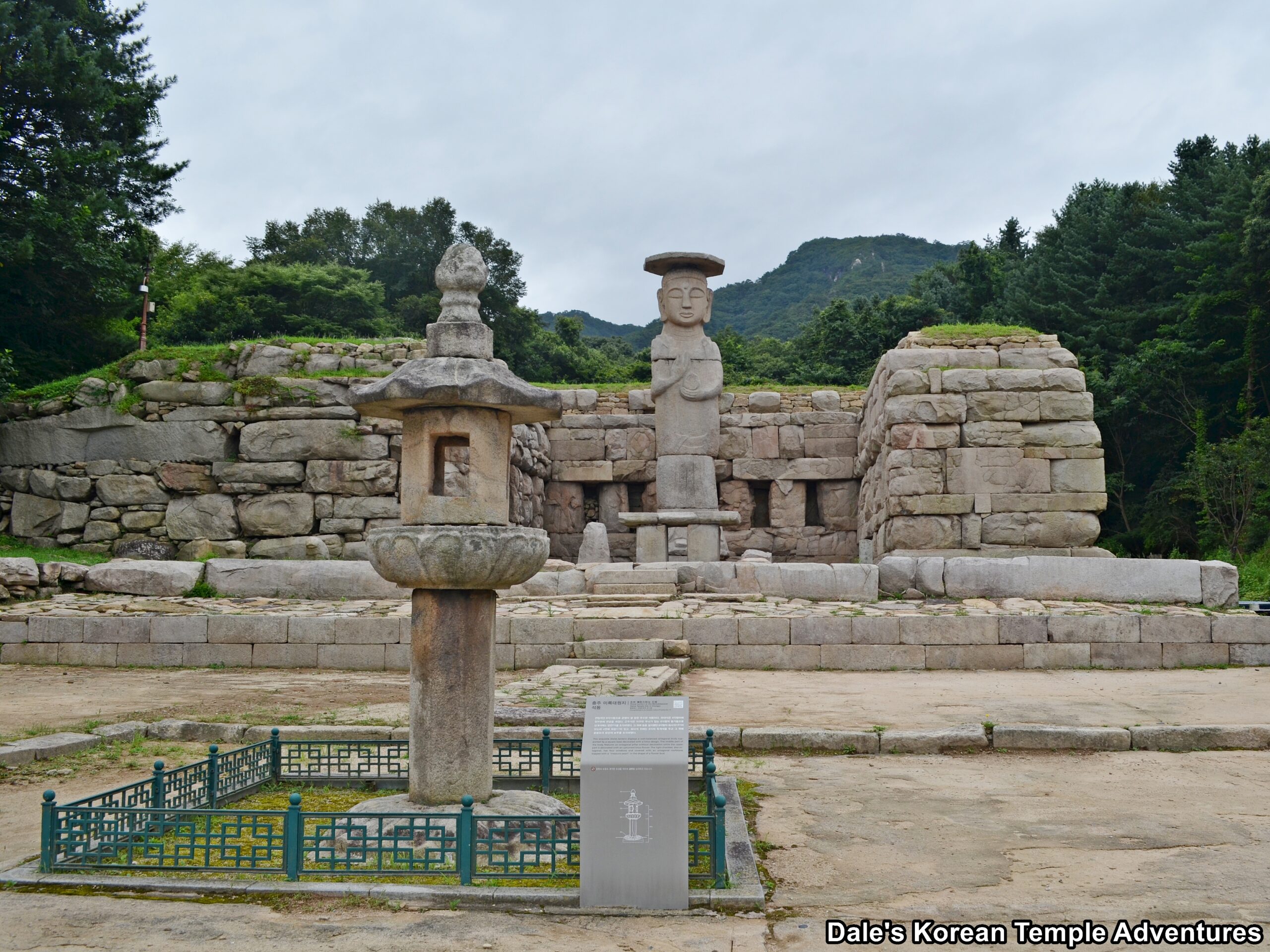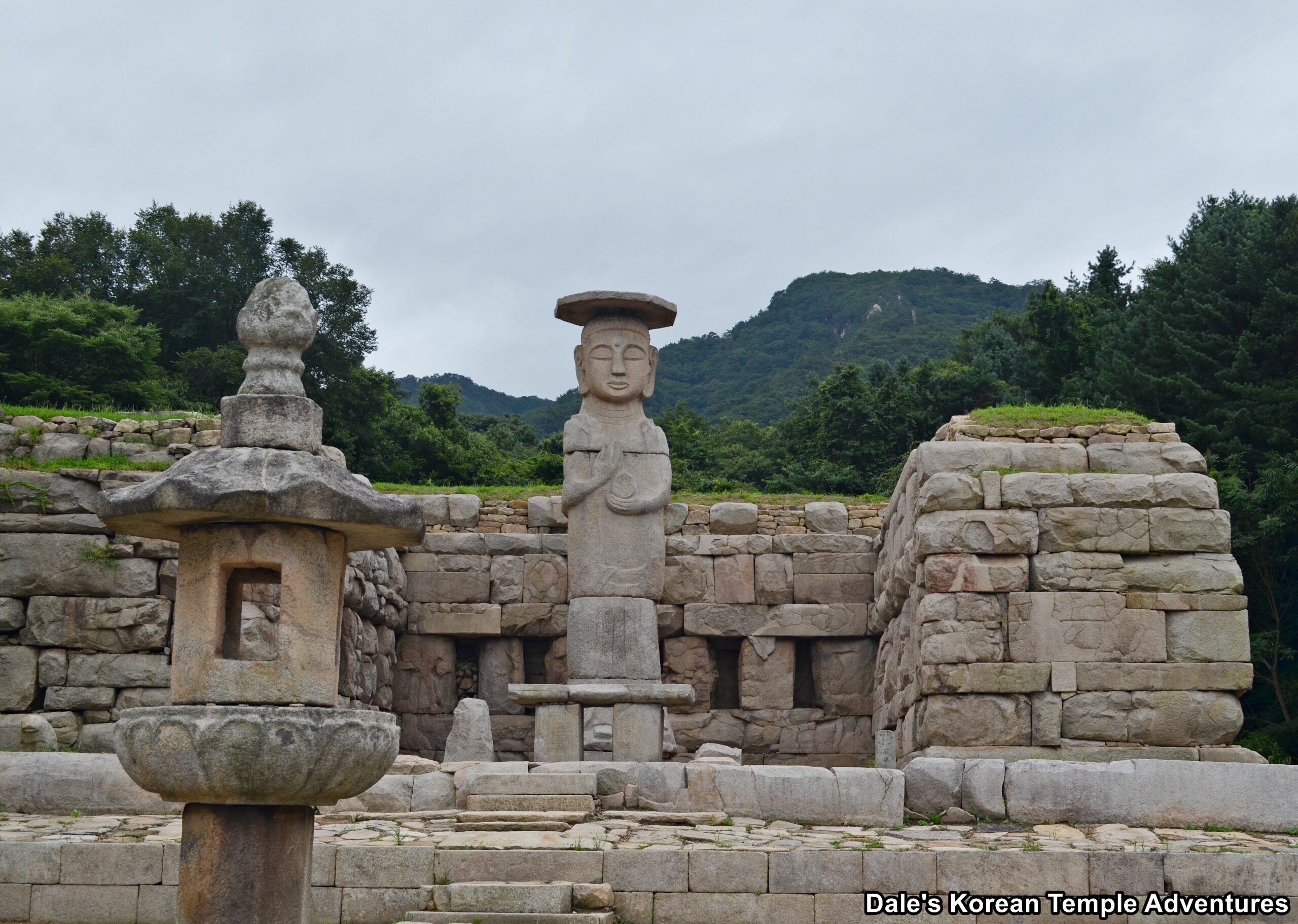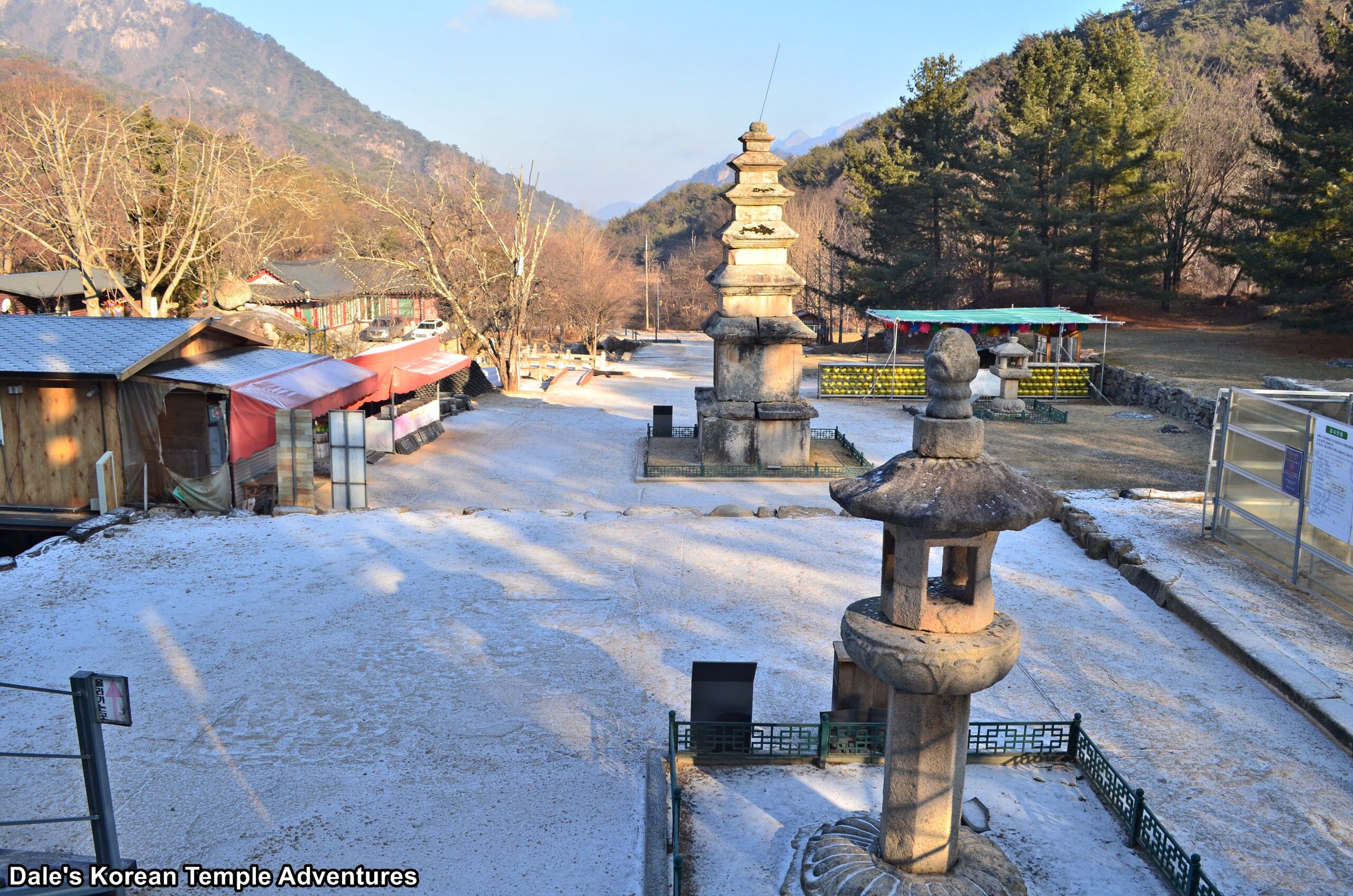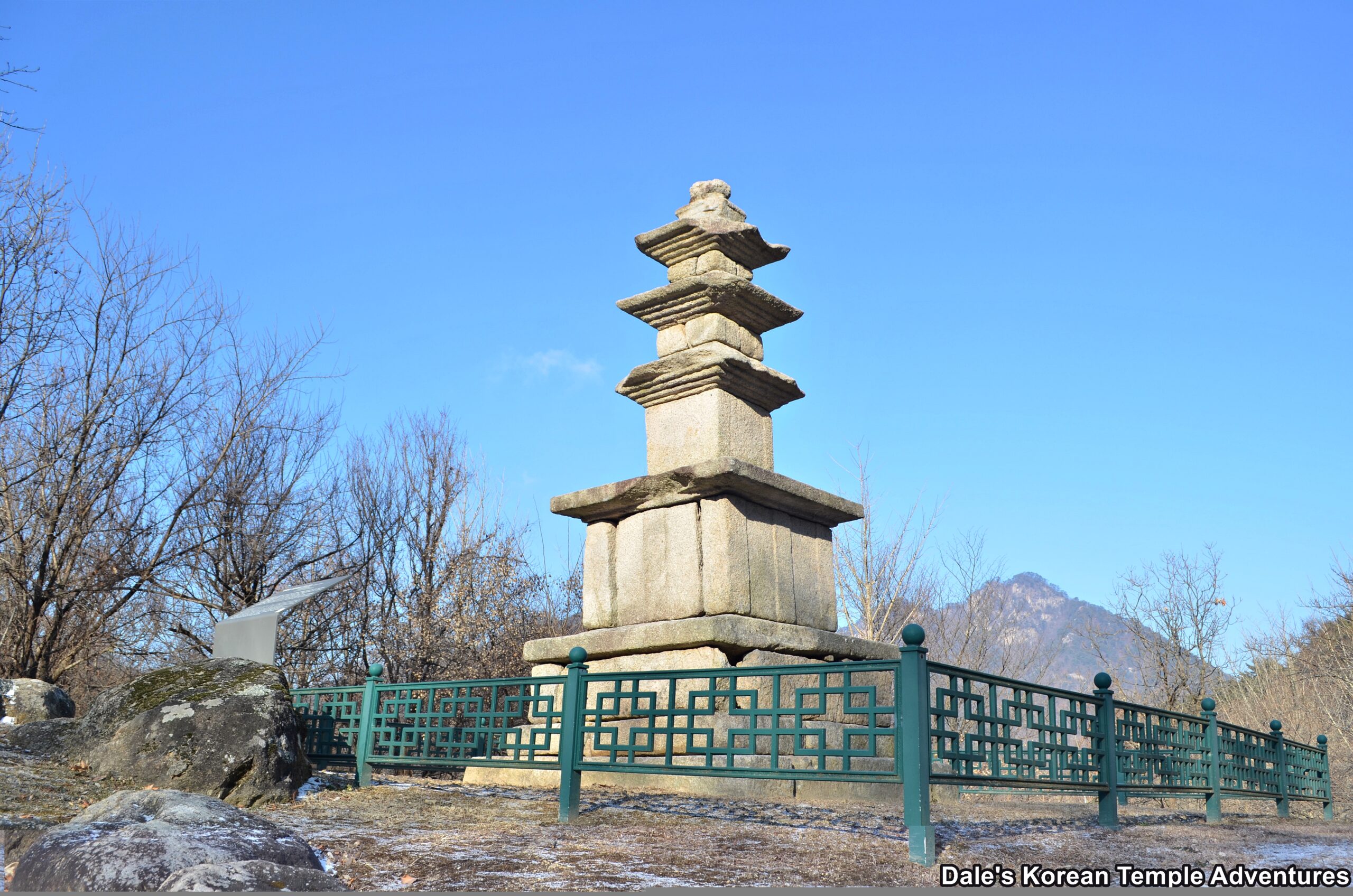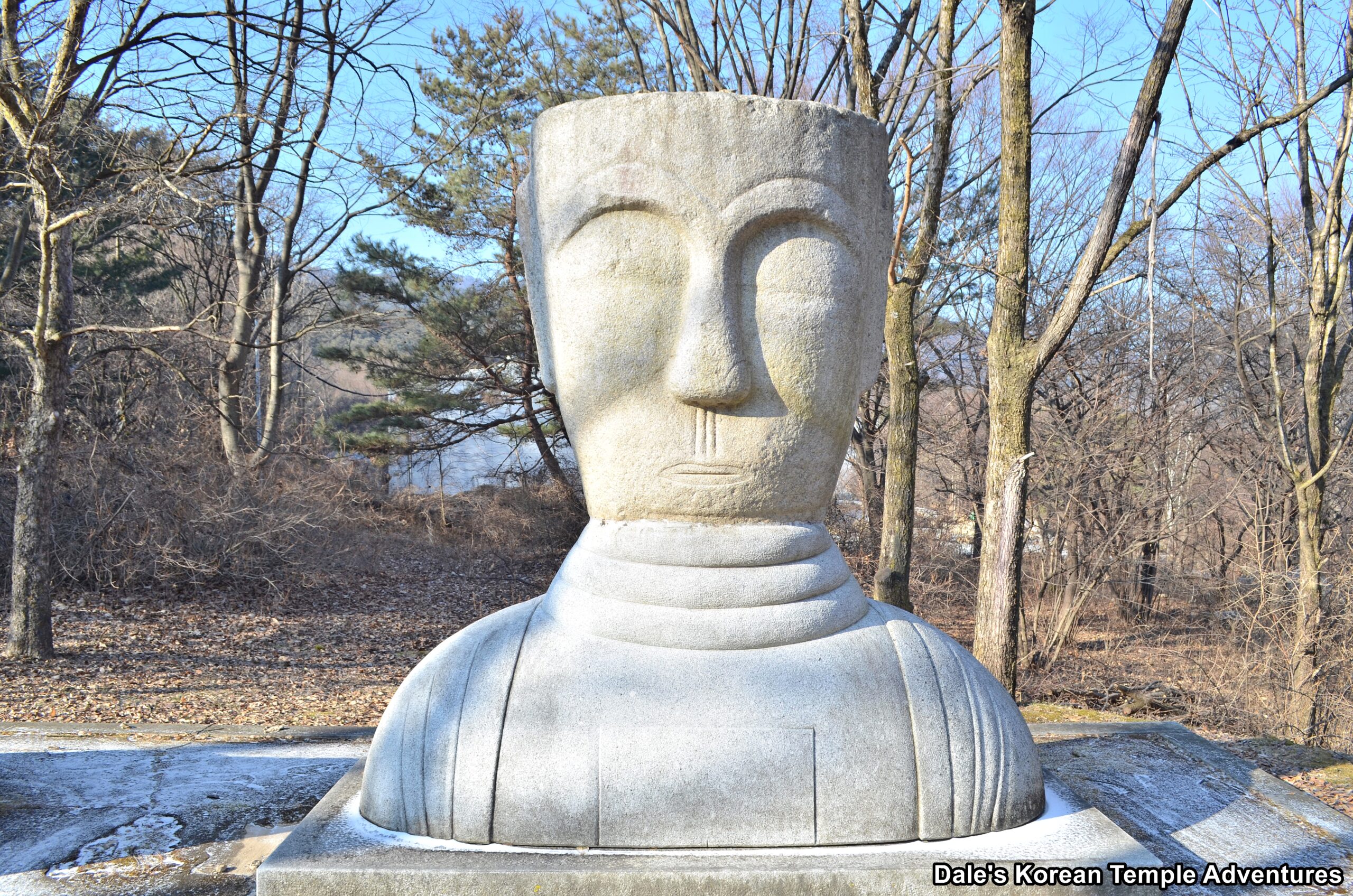Mireukdaewon-ji Temple Site – 미륵대원 (Chungju, Chungcheongbuk-do)
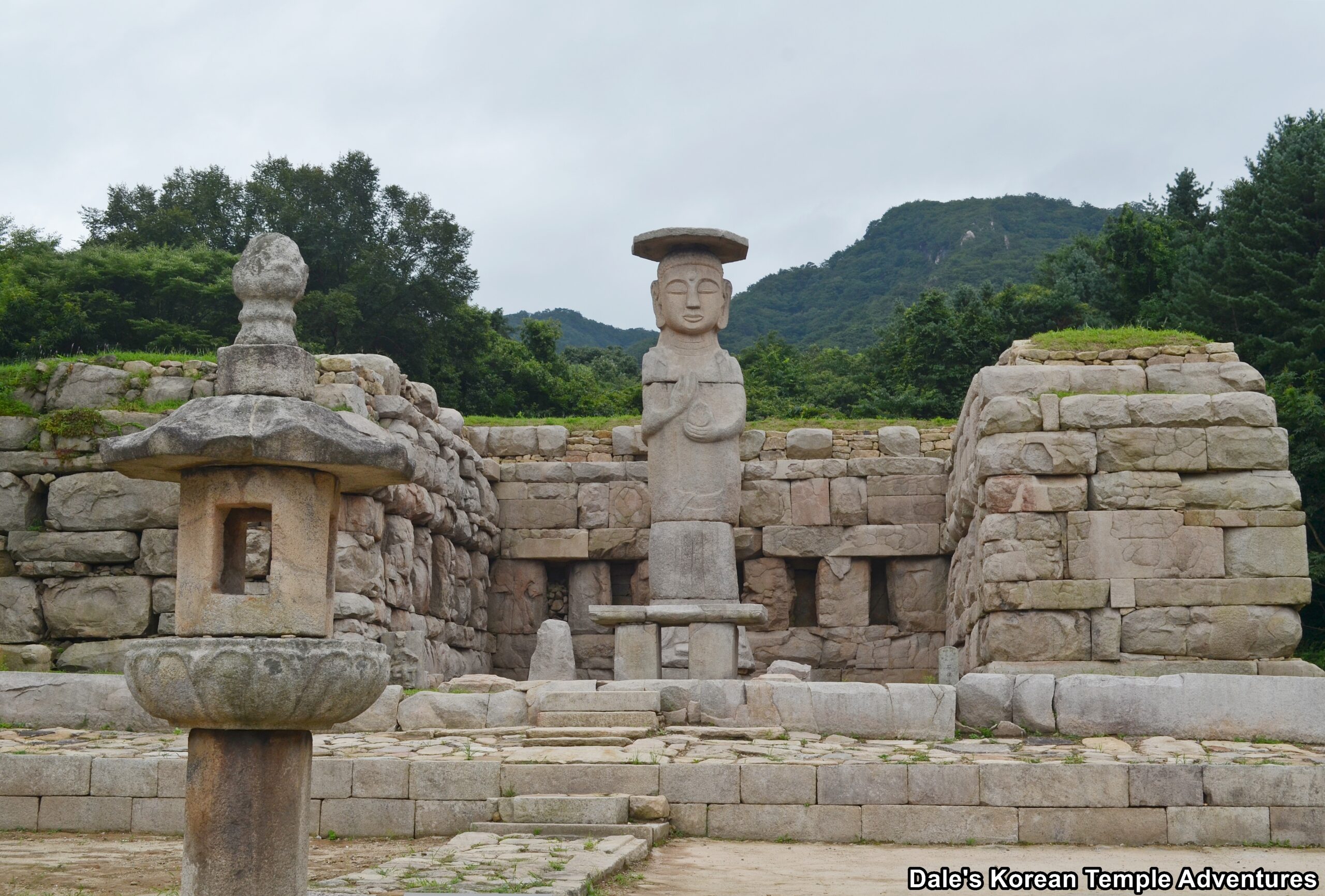
Temple Site History
The Mireukdaewon-ji Temple Site is located in Woraksan National Park to the northwest of Mt. Poamsan (963.1 m) in Chungju, Chungcheongbuk-do. As the name of the temple site hints at, Mireudaewon-ji Temple Site was built for the worship of Mireuk-bul (The Future Buddha). Unfortunately, there is no specific historical records about when the temple was first founded and when it was later destroyed. However, from various archaeological digs and speculation, it’s assumed that the temple was first founded between 901 and 937 A.D., and it was later destroyed in 1230 by the invading Mongols.
The temple was later rebuilt after its destruction during the early Joseon Dynasty (1392-1910). However, it was destroyed, once more, by the Japanese during the Imjin War (1592-1598). It’s believed that the temple was later repaired during the 18th century. It’s unclear when the temple was finally left in ruins.
There was extensive excavation work conducted on the temple site in 1977, 1978, and 1982 around the building sites. It was during these excavations that a tile was discovered that read “Mireukdangcho” on it. It’s from this tile, and other factors, that they were able to estimate that the temple was built some time during the late Unified Silla Dynasty (668-935) to the early Goryeo Dynasty (918-1392).
The Mireukdaewon-ji Temple Site is Historic Site #317. Additionally, the temple site is home to two Korean Treasures. They are the Stone Standing Buddha in Mireuk-ri, which is Korean Treasure #96. The temple site is also home to the Five-Story Stone Pagoda in Mireuk-ri, which is Korean Treasure #95. It’s also home to a handful of Chungcheongbuk-do Tangible Cultural Property.
Temple Site Legend
According to legend, Crown Prince Maui, who was the son of King Gyeongsun of Silla (r. 927-935 A.D.), who was the last king of Silla, was fleeing from Gyeongju and headed towards Mt. Gyegolsan. Along the way, he was lamenting the fall of Silla. On the way to Mt. Gyegolsan, his sister, Princess Deokju, constructed Deokjusa Temple. Deokjusa Temple faced the south and she had a rock-carved Buddha made at the temple. To match his sister’s Buddha at Deokjusa Temple, Prince Maui made a stone cave at the Mireukdaewon-ji Temple Site facing north. It’s also said that the Stone Standing Buddha in Mireuk-ri, which is the name of the stone Buddha that Prince Maui purportedly made, was influenced by the Seokguram Grotto in Gyeongju.
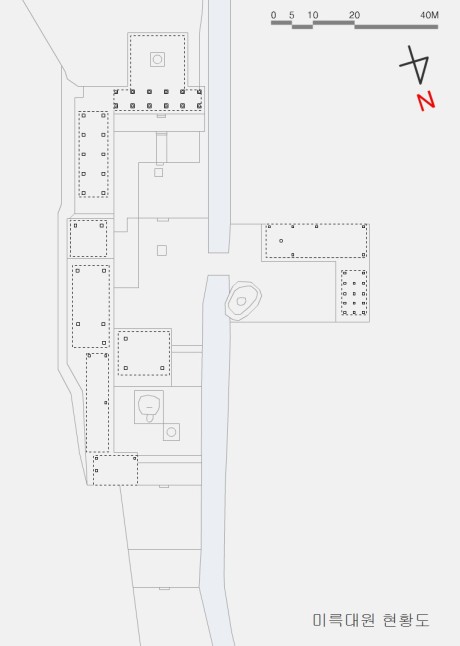
Temple Site Layout
Rather interestingly, the Mireukdaewon-ji Temple Site is divided into two sides. It’s divided by a stream that runs the length of the temple grounds from north to south. With this in mind, the narrow temple grounds are made to fit the landscape with the historic temple site to the east of the stream and the newly built Saegyesa Temple to the west of the stream. It’s also to the west of the stream, where the newly built temple is located, that a pair of former shrine hall foundations can be found.
Now, with all that in mind, and heading south on the east side of the Mireukdaewon-ji Temple Site, which is the historical part, you’ll first come to a collection of three foundation stones, or stone supports, with stone lotus reliefs adorning them.
Further up the terraced pathway, you’ll notice the large Tortoise Pedestal at Mireukdaewon-ji Temple Site. It measures an incredible 605 cm in length and 180 cm in height, which makes it the largest remaining stone tortoise base that is meant to support a monument in Korea. Also, it has two small tortoises crawling over its left shoulder in relief. Rather interestingly, the indent that is meant to hold the body of a stele is too small in size. With this in mind, not a single fragment of a body stone has ever been found, which leads experts to believe that the Tortoise Pedestal of Mireukdaewon-ji Temple Site was never used as a monument’s base.
Backing the Tortoise Pedestal of Mireukdaewon-ji Temple Site is an elevated foundation for a former temple shrine hall. Also to the east of the Tortoise Pedestal of Mireukdaewon-ji Temple Site, in a perfect line, are additional elevated foundations for former shrine halls.
Beyond the back of the Tortoise Pedestal of Mireukdaewon-ji Temple Site, and the elevated foundations to the south, you’ll enter another former courtyard at the temple site. In this area is additional stone masonry from the former temple, as well as the beautiful Square Stone Lantern at the Mireukdaewon-ji Temple Site. This stone lantern is distinct in design. The light chamber to the stone lantern has four pillars on each of its four corners. This style was unique to the Kaeseong area, which was the capital of Goryeo. So it’s rather unique to see the migration of this style of stone lantern south of the former capital. It appears as though the stone lantern dates back to around the 10th century, and it has a beautiful lotus relief on its pedestal.
To the right of the Square Stone Lantern at the Mireukdaewon-ji Temple Site is the Five-Story Stone Pagoda in Mireuk-ri, which is Korean Treasure #95. The five-story stone pagoda, along with a stone lantern, is placed out in front of the Stone Standing Buddha in Mireuk-ri in a line. The lower part of the base consists of one square unadorned stone on top of the stylobate. The roof stone of the first story of the pagoda is made from two stone slabs, while the other roof stones consist of just one stone slab. The five-story pagoda tapers upwards. And all that remains of the finial is the finial’s base. In fact, the finial stone is so large that it almost looks like another roof stone, making the pagoda a six-story structure. The pagoda dates back to the early part of the Goryeo Dynasty (918-1392).
The final stone structure that visitors can explore at the Mireukdaewon-ji Temple Site is the Stone Standing Buddha in Mireuk-ri. There is a stone cave that surrounds the Stone Standing Buddha in Mireuk-ri. It was made by piling big stones around the statue. Originally, there was even a wooden building that surrounded this stone image of Mireuk-bul (The Future Buddha), but it’s long gone. The Stone Standing Buddha in Mireuk-ri stylistically resembles other large sized Buddha statues in the area during the early Goryeo Dynasty. The main body of the statue is constructed from five separate stones, while the hat is made from one thin stone. The Mireuk-bul statue has a round face, arched eyebrows, and narrow eyes with a flat nose. And its thick lips are a characteristic of statues in the region. This bold and massive Buddha statue is meant to reflect the newly formed and growing Goryeo Dynasty. The Stone Standing Buddha in Mireuk-ri stands at an impressive 10.6 metres in height.
The final two things you can see at the Mireukdaewon-ji Temple Site, and while heading south towards the neighbouring Daewonsa Temple along a bending road, are the Three-Storied Stone Pagoda in Mireuk-ri and the Buddha’s Head of Mireuk-ri. First is the Three-Storied Stone Pagoda in Mireuk-ri, which is believed to date back to the early Goryeo Dynasty and follows the architectural style of the Silla Dynasty. The reason for the pagoda’s location is unknown, but it’s speculated that the pagoda was located where it is to help support the lack of pungsu-jiri (geomancy). And the second structure in this area, and a little further south, is the Buddha’s Head of Mireuk-ri. The head, which has a newly attached stone body, measures 138 cm in height and 118 cm at its maximum width. It has small slender eyes and a sealed mouth. The ears of the head are long and the tip of the nose is thick. It’s believed that the Buddha’s Head of Mireuk-ri is an unfinished Buddha sculpture from the Goryeo Dynasty.
How To Get There
From the Chungju Intercity Bus Terminal, which is in front of HiMart, you’ll need to take Bus #245 or Bus #246. Both buses take about 53 minutes to get to the Mireukdaewon-ji Temple Site, or 39 stops. You’ll need to get off at the “Mireuk-ri – 미륵리” bus stop. And from where the bus drops you off, you’ll need to walk about 12 minutes, or 800 metres, to get to the temple site.
Overall Rating: 7/10
There is a lot to see and enjoy at the Mireukdaewon-ji Temple Site like the massive Tortoise Pedestal at Mireukdaewon-ji Temple Site, the Three-Storied Stone Pagoda in Mireuk-ri, the Buddha’s Head of Mireuk-ri, and the Square Stone Lantern at the Mireukdaewon-ji Temple Site. In addition to all of these stone artifacts, you can also enjoy both the Five-Story Stone Pagoda in Mireuk-ri and the Stone Standing Buddha in Mireuk-ri, which are both Korean Treasures. While rather remote, the Mireukdaewon-ji Temple Site is definitely worth a visit.

